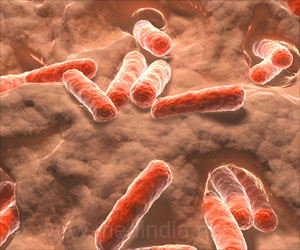British scientists claim to have identified the genetic switch that could help heal the crucial BRCA1 gene and limit chances of breast and ovarian cancers.
Scientists at the Medical Research Council Laboratory of Molecular Biology, UK claim to have identified the genetic switch that could help heal the crucial BRCA1 gene and limit chances of breast and ovarian cancers.
It is the gene’s inability to interact with CtlP, a protein, that could explain why BRCA1 remains unhealed, leading to breast and ovarian cancers.By studying the interaction between BRCA1 and CtIP, the scientists discovered a switch that causes DNA breaks to be repaired using another identical piece of DNA as a template. Using the template makes sure the correct genetic sequence is restored without mistakes, thereby reducing the chance of introducing harmful mutations.
In a research paper appearing in Nature on 21 May, Dr Kevin Hiom and Dr Maximina H. Yun from the Cambridge laboratory describe how BRCA1 works.
Dr Hiom said: "Our findings help us to understand of how breaks in DNA strands can be repaired in a way that preserves our genetic code so that harmful mutations, which may lead to cancer, are kept to a minimum. We use chicken cells because they repair their DNA in a similar way to humans. Also we can easily create cells lacking different factors involved in DNA repair to study in the laboratory what happens when these factors are missing."
Cancer is caused by alterations in the sequence of the genetic material DNA. These mutations often arise when DNA becomes damaged, for example, through the generation of DNA breaks. Sometimes this damage is repaired accurately to restore the original DNA sequence and other times it is repaired inaccurately to produce a mutation.
Together BRCA1 and CtIP act on broken ends to enable the reconstitution of one strand of a DNA helix to generate a region of single-stranded DNA. The generation of this single stranded DNA tail, which becomes the template for repair, is a critical step in the initiation of accurate DNA repair.
Advertisement
Lead author Dr Hiom called the findings a 'major breakthrough'.
Advertisement
Source-Medindia
GPL













